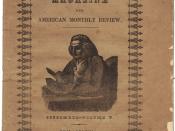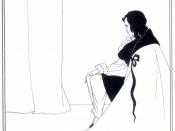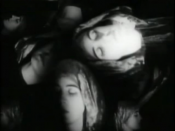Edgar Allan Poe's Use of Setting
Setting is the physical background of a story. Normally explained at the beginning, it tells the time and place of the story's action. Words take the place of paints in describing textures, images, sounds, colors, and sometimes even tastes, creating a picture in the reader's mind in which he or she can place the story's characters and actions. In identifying the setting, one should start by determining the town and year in which the story takes place. It is useful to consider how the nature of the events changes with the settings. The kinds of events that take place in a grocery store are usually different from those that occur in a graveyard or tomb. In three of Edgar Allan Poe's short stories, "The Cask of Amontillado," "The Pit and the Pendulum," and "Fall of the House of Usher," he uses setting to paint a dark and gloomy picture in the reader's mind.
Easily associating darkness with death, Poe is able to set the mood of the story before any action has taken place. Setting can be used for a variety of purposes; a single point of the setting may be described in detail, making it stand out to the reader, usually later having a strong effect on the protagonist.
"Poe did not evoke a historical setting for his stories" (Columbian Companion, 16). In "Fall of the House of Usher," Poe has the protagonist describe the house and its surroundings as he is led into the mansion, using the setting as a key element to the mood of the story. Usher's house, its windows, bricks, and dungeon are all used to make a dismal atmosphere. The "white trunks of decayed trees," the "black and lurid tarn," and the "vacant, eye-like...


